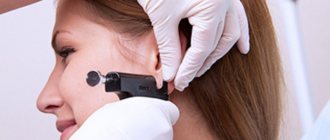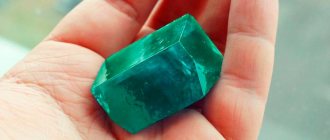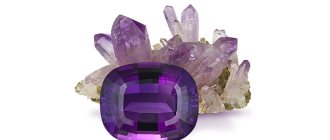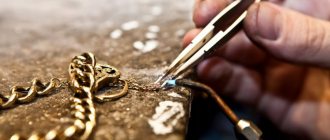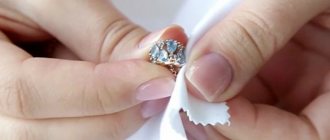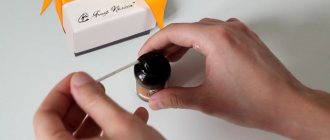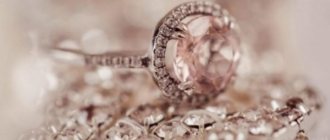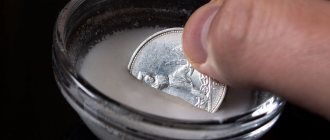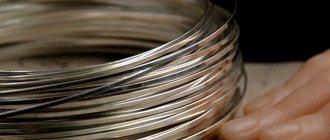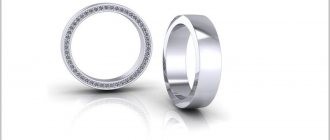Plan
- Types of ear cartilage piercings
- Which earring to choose?
- Stages of the procedure.
- What to do before piercing?
- Contraindications
- How does the process work?
- Caring for your piercing after the procedure
- What tools are used?
- How many days does it take to heal?
- Possible complications after piercing
- What problems might arise and why?
- Recommendations
- Range
- What's in fashion?
The history of ear cartilage piercing goes back centuries: before, every element of the image had meaning, now stylish hoop earrings are a beautiful, spectacular element of a holistic image. To obtain the result, a puncture is performed with a special instrument.
Interestingly, ear piercing is one of the oldest forms of body modification. This was done long before our era, which is confirmed by archaeological research. In the twentieth century, there was a real “boom” in piercing - regarding the piercing of the lobe, it was done by friends at each other’s homes. Gradually, this procedure is turning into a separate service from a medical specialist.
Cartilaginous piercing differs significantly from earlobe piercing - both in the procedure, the instruments used, the care, and the healing process. This type of puncture is painful and sometimes requires pain relief.
Types of ear cartilage piercings
- Helix is a type of piercing where the upper part of the shell at the helix is pierced, partially capturing the cartilage. The peculiarity of the procedure is that it is quite painless, since there are no nerve endings there.
You cannot select jewelry that is thick - if the earlobe stretches (for example, under tunnels), then the cartilage does not.
- Forward Helix is also a piercing of the cartilage part, but in the opposite place from the previous type. Usually several punctures are made here for miniature jewelry.
It should be taken into account that healing, in this case, is a long process - about 4 months.
- Industrial piercing is a type of puncture of the cartilage part, which requires 2 holes on the upper cartilage, with a barbell earring inserted between them. The most popular option: one hole in the front of the sink, near the head, the second - exactly at the opposite point.
Initially, it is not recommended to insert a steel earring; wear bioplastic jewelry for several months while the healing process takes place.
- Days piercing - a puncture is supposed to be made in one of the curls of the internal cartilage, performed from top to bottom. You can install half rings, rings, rods of a certain type. Sometimes several punctures are made. This type is universally suitable for both sexes.
After the puncture, the earring is immediately inserted; it should not be too thick so as not to cause discomfort. The healing process, depending on various factors, can last up to 8 months.
- Ruuk piercing is a puncture in the cartilage of the ear opposite the tragus on the protrusion. It is more difficult if the ear concha is naturally small, but this is not a limitation if this is the type of piercing you want. This is difficult only for the master. You also need to carefully and carefully select jewelry - not everything will suit. Consider your anatomical features and consult a professional.
- Orbital piercing is a type of double puncture. The peculiarity is that the ini connect the ring. The number of punctures may vary, but the procedure is not performed at once - it is carried out in stages so as not to cause discomfort and complications. Healing lasts up to 1 year.
The specialist does not just pierce, but before that he carefully calculates the distance between the holes, taking into account possible changes in the cartilage itself.
- Tragus piercing is a tragus piercing, the most elegant option, considered for women. A puncture is expected in the front of the shell. Miniature rings and carnations are suitable for it.
Immediately after the procedure, you need to be careful - do not sleep on the side of the puncture, and it is not advisable to use an earphone.
Where to pierce the cartilage?
For women, it does not matter which ear to pierce the cartilage in, but men are not recommended to pierce the right ear. This is due to the prevailing opinion that piercing the cartilage on the right ear in men means they belong to gay people.
The cartilage puncture is performed exclusively with a needle; it is not allowed to be performed with a gun - the likelihood of damaging the cartilage due to a strong blow from the earring is extremely high. When using a gun to puncture a person’s cartilage, the process of scar tissue growth may begin and a keloid may form. The probability of developing inflammation when a pistol is punctured is 95%. It is not painful to pierce the cartilage with a needle, since there is practically no soft tissue, and there are no nerve endings in the cartilage.
Important! It is not recommended to pierce the cartilage at home, as there is a high probability of infection or incorrect selection of needle and jewelry. Please note that sometimes you will need to use a catheter to insert the earring.
Which earring to choose?
Initially, before piercing, decide on the thickness of the earring, since the hole in the cartilage does not stretch, as is the case with the earlobe.
- One of the most popular options is a barbell or barbell. The optimal solution for industrial punctures. Visually, it is a tube with clamps; it does not bend. The decor is varied - stones, thorns and other decorations.
- The ring is the standard type of earring for both cartilage and lobe. The circle is not closed; in place of the missing part there is an insert-ball or other decor.
- Labret is a decorated stick similar to a stud. The straight stick is bordered by discs on each edge.
- A circular is a horseshoe that ends with balls on both edges.
- Banana is an earring of a characteristic shape, with a twist on both ends - a ball or a cone.
Beautiful photos
Of course, most of the beauty is given by the earring itself and, looking ahead, I will say that you need to buy it before you are going to pierce something
Tragus
Helix
It may seem that it is easy to do, which means there will be no complications. No matter how it is, if the fundamental principles of piercing are violated, unpleasant complications occur.
Industrial
This is the most favorite puncture in our country, which is probably why you can see many messages about the complication on the Internet
Stages of the piercing procedure
- If there are no contraindications for the procedure, the specialist carries out training: the specialist examines the features of the ear; disinfecting the ear with alcohol; The puncture site is marked with a special marker. Some puncture sites are much more painful than others. Pain medication may be used.
- Fixation with a tool - using a clamp.
- The cartilage is manually pierced with a catheter needle - the needle is removed, leaving the catheter.
- Next, the previously disinfected jewelry is inserted into the catheter, and it is gradually pushed out by the earring.
- As a result, the catheter is removed from the stem and the ball is screwed onto the earring.
Ear piercing: history
Ear piercing is the oldest decoration of the human body, and its history goes back to ancient times. This is confirmed by historical excavations, during which a well-preserved human body was discovered. During the analysis, it was revealed that man lived about five thousand years ago. And believe it or not, his earlobes were pierced. This is proof that ear piercing existed long before our days.
There are several other famous examples of ear piercings from antiquity. For example, the famous death masks of the pharaohs, which clearly show that during their lifetime the pharaohs had pierced ears and wore rich jewelry. And ancient images of the gods of Hinduism are clear evidence that ear piercing was popular back in those ancient times.
In the 16th century in Europe, earrings were actively worn by men close to the royal court. Ear piercing has also been popular among sailors since ancient times. Gradually, the fashion of wearing earrings came to the West and ear piercing was already used by almost everyone.
Preparing for the piercing procedure
The puncture site is first examined by a specialist to assess the location of the vessels and the anatomical features of the ear.
The main point is that piercing the ear cartilage is painful, more difficult than piercing the earlobe. Before piercing, start with the lobe.
- First, the entire ear is disinfected - it is treated with 95% alcohol.
- The jewelry itself, which will be inserted immediately after the puncture, is disinfected: for this purpose, treatment is carried out in an autoclave (dry heat), which allows you to kill 99.9% of microbes. The disinfection process takes 15-30 minutes.
- A dot is placed at the puncture site with a special antiseptic marker, and anesthesia is administered.
Since the procedure is quite painful, local anesthesia is used: external, injection, or both. A special cream or spray is applied to the skin as an anesthetic, then an injection is given. Sometimes only external anesthesia is enough - it all depends on the puncture site and the client’s pain threshold.
How to disinfect jewelry and tools at home
I know for sure that miramistin can kill HIV, Hepatitis B and C. But I can’t say it will work with Hepatitis A and yet he is afraid of ultraviolet radiation and dies in a couple of minutes.
Miramistin is our everything
An integrated approach in the form of miramistin and ultraviolet radiation will destroy all possible nastiness
Boiling
This is generally a must have since all these viruses and hepatitis are not resistant to external factors. The most persistent on this list is Hepatitis B; it requires 30 minutes of boiling.
Contraindications
There are a number of features that do not allow ear cartilage piercing - primarily to protect against complex and dangerous consequences.
First of all, you cannot perform the puncture yourself, anywhere; it is dangerous to trust the procedure to just anyone - the process can have irreparable consequences if something is done incorrectly. Contact the professionals!
Before the procedure, the master pays attention to the anatomical and physiological features of the client’s ear. Sterile operating conditions are extremely important.
In some cases, a professional, a licensed master, will refuse to carry out the procedure. Grounds for refusal:
- Any blood disease;
- Pregnancy;
- The client has not reached the age of majority;
- Traumatic brain injury;
- The client has diabetes;
- Rheumatism, arthritis;
- The client came in sick (flu, ARVI).
Ancient tradition
The popularity of piercing has long been evidenced by numerous remains discovered by archaeologists. Ötzi's mummy was found in Austria, which is already 5,300 years old. Earrings are mentioned in the Bible. Representatives of different nationalities had the peculiarity of highlighting their appearance with fascinating piercings. This indicated prosperity, wealth and noble status.
The fashion for this type of distinguishing from others arose due to the simplicity of the procedure - the ears healed quickly, and the jewelry was visible from a long distance. Earrings assigned a person to a certain class and fully informed about him:
- Origin.
- The importance of pedigree.
- Conquests during campaigns.
- Position in society.
- Class.
- Age.
In Rus' it was believed that jewelry warded off enemies and evil spirits.
How does the process work?
The cartilage is specially illuminated with a lamp to determine the anatomical features and location of the vessels. Then preparatory work is carried out - disinfecting the ear with alcohol, placing a dot at the puncture site. To obtain a hole, a catheter needle of the required thickness is used. The earring is immediately inserted into the puncture.
There is no need to fear for your vision, hearing or other body functions. There is a stereotype that piercing carries a danger of damaging nerve endings. Large nerve branches cannot be damaged, so there is no need to fear for your health. Especially if you trust a professional.
What is a cartilage puncture called?
The picture was taken from one English-speaking site and the names do not change because they are all pronounced without translation, although words such as lobe (lobe) of course need to be translated
The most popular species in the CIS are:
- Tragus
- Helix
- Industrial
- Orbital
From the picture we can see complex punctures; you can identify them by touching your ear. For example, at the bend of the ear there is dense cartilage. And rook generally requires puncturing two cartilages at once, and besides, it’s difficult to get to them. Of course, an amateur cannot cope with this.
Caring for your piercing after the procedure
Healing after a cartilage piercing takes longer than with an earlobe piercing. To ensure that the process goes without any problems or complications, it is recommended to follow these recommendations:
- You should not touch the puncture site - this is important, since it is quite easy to get an infection.
- Healing occurs over the course of 4 weeks - those earrings that were inserted immediately after the piercing do not need to be removed during this time.
- For a certain time, baths and saunas are prohibited, for the same reason as in the first paragraph. For the first three days after the procedure, you should generally be extremely careful with water procedures. A categorical ban on swimming in natural bodies of water.
- You cannot move or twist the earring installed after the piercing - the more you irritate the puncture area, the more the fibrous tissue thickens.
- Prohibition of hot baths and showers - high-temperature water can cause bleeding.
- Be careful not to catch the piercing with hair or clothing.
- It is not recommended to sleep on the side in which the piercing was made - a person may twist in his sleep, and you will not notice how you injure the puncture area.
- The main point is that alcohol should not be used as an antiseptic, as it can cause tissue burns.
For quick healing and care, experts recommend special products, taking into account the type of piercing.
For the first 4 weeks, you need to regularly treat the puncture with an antiseptic - only in this case can and should you rotate the earring. This is necessary so that the product is evenly distributed throughout the channel, entry and exit points of the earring - everything must be thoroughly disinfected.
If you play sports, after taking a shower, you need to additionally treat the hole with an antiseptic.
If the puncture site, with proper care, becomes red, swollen, or painful, you should contact the specialist who performed the puncture as soon as possible.
Ear piercing: tunnel
Tunnels on the earlobes were made many thousands of years ago by representatives of various cultures. Today, this type of piercing can be found among some residents of African tribes. But modern fashion does not stand still and tunnels are becoming more and more common among European and Western youth. To get an ear tunnel piercing, the earlobe is pierced as in the classic type of piercing. When the earlobe has healed, a special stretcher is inserted into the hole to widen the puncture and a round tunnel is inserted.
What tools are used?
In terms of the set of tools, ear cartilage piercing differs from earlobe piercing. The lobe is pierced with a special gun or needle. The hole can stretch, depending on the diameter of the decoration - there is no need to carefully select the diameter.
There are a little more problems with cartilage:
- Since it does not stretch, you must initially select the number of a special needle for a specific size.
- For a puncture, a catheter needle of a certain number is used - it indicates the size of the future hole.
- A window clamp, a clamp and a special ring release are also used.
The main tasks of the specialist who performs the piercing are to avoid two problems:
- Crushing of ear cartilage.
- Getting injured due to incorrect actions.
To avoid problems and injuries, piercing is performed manually with a needle, since the gun can crush the cartilage.
Industrial ear piercing
If you want to get an original ear decoration, then choose an industrial piercing. This type of piercing is performed at the top of the ear. A metal rod passes through the cartilage holes at the top of the ear. Looks very impressive!
Possible complications
During the piercing process, the following problems are possible: crushing of the ear cartilage, injury, infection. What does this mean?
- Using a gun can crush the cartilage, so the piercing is performed with a sterile catheter needle.
- If crushing occurs, the cartilage may die and take a long time to heal.
- Even if healing occurs, scars and large holes that do not heal are possible. To avoid necrosis, you need not only to contact a professional, but also to regularly treat the puncture site.
- Another risk is associated with allergic reactions - this is not a common problem, but it is worth noting that the body may have an adverse reaction to some metals. It is recommended to use medical or jewelry style titanium as the first earring.
Part of the culture of human society
The custom arose at the birth of civilization, but remains relevant to this day. Since it was formed in each culture separately, regardless of the inclinations of each nation and the absence of any communication between people, there is a huge variety of techniques. Each girl and even a child chooses for themselves from the point of view of what seems most attractive and comfortable.
In Greece they wore pendants that looked like sacred birds; in Rome they were created from special molds and subsequently decorated with precious stones. The decline in fashion in Europe occurred in the 4th century. and lasted until the 16th century, when hairstyles and wardrobe items that covered the ears appeared. After this, piercing returned as a type of jewelry for men.
At the same time, people begin to believe that ear piercing improves vision, which is why sailors wore earrings. There was a belief that after death, it would be possible to identify a person by the body, and by selling the jewelry, they could get money for the funeral, as required by Christian custom.
Re-popularity declined in the 1930s. after the invention of clip-on clips, the fashion for which was extreme. By this time, the male part of the population refused to wear earrings. In modern times, the trend of using piercings returned after the war, when the female gender again began to pierce their ears.
Girls performed this procedure on their own at parties using a needle and ice as a freezing agent. Since then, many names have remained in use and are used to this day.
What problems might arise and why?
First of all, the most dangerous factor is dirt, microbes, and mechanical damage. Contact with any dirty objects, microcracks can cause blood poisoning, purulent processes, and bleeding.
If you have had viral diseases (especially shortly before piercing), otitis media, or upper respiratory tract diseases, this may negatively affect the regeneration processes, and the healing process will take longer.
Constant mechanical influences and scars are a consequence of improper care. If you notice a slight deviation from the norm, immediately contact a specialist to understand the cause of the problem. In some cases, not only ordinary care is required, but also therapy with more serious methods.
The most common problem is inflammation. Causes:
- The earring is constantly removed, forgetting that this cannot be done for 4 weeks;
- Swimming in a river or lake is a sure step to introduce dirt and microorganisms into an unhealed puncture;
- Do not regularly treat the puncture site;
- The procedure was carried out incorrectly and by a non-professional.
Scarring, purulent inflammation, lumps, abscesses, compactions are signs not only of low hygiene, but also of low immunity and previous infectious diseases. In rare cases, rejection is, on the contrary, a sign of a high level of immunity.
If any abnormal sign appears, you should immediately contact a specialist. You may need medication to help you recover quickly.
Healing time
Several factors influence:
- Localization.
- Number of simultaneous punctures.
- Season.
- Features of care.
- The state of immunity and the absence of diseases of the endocrine system.
- Master's qualification.
Needle puncture holes are safer than gun wounds. The epidermal tissues tighten from 3 months to six months. The wound must be properly monitored to avoid infection.
Recommendations
- There is no need to start piercing your ears with cartilage; first, try experimenting with the lobe - the procedure is less painful and heals quickly (up to 1.5 months).
- Do you want some punctures? There is no need to do several operations at once - this is a painful process.
- It is imperative to carefully care for the puncture itself, especially during the first year.
- Don’t forget that cartilage takes longer to heal and the procedure itself is painful.
- Tell your doctor right away if you are allergic to certain metals. It is advisable to find out if you have allergies before the procedure.
- Maintain hygiene - treat the hole 2-4 times a day, always after a shower or sports activities.
- Wear your headphones carefully; it is better to use wireless ones.
- Before processing the canal and the edges of the hole, be sure to thoroughly wash your hands and treat them with an antiseptic. A saline solution is suitable for treating the canal.
How long does it take to heal a cartilage puncture?
Simple punctures take three months to heal, and complex ones take six months. It’s worth targeting exactly six months. The longer you wear the primary jewelry, the better, and I perfectly understand your desire to install the jewelry there as quickly as possible, but you are in no hurry.
My darling
When can you change earrings?
If the puncture was simple, some kind of helix, tragus or forward helix, then it will take about two months, but you need to make sure that you do not have any biological secretions that could react with the metal.
On average, of course, this is three months of active care and monitoring of the process, the longer the better. The newly formed skin is thin and can easily crack and begin to secrete lymph, which is fraught with the consequences of interaction with precious jewelry.
What to process
The first two weeks are the most difficult; more careful care is required at this time. And the treatment itself is an extremely complex event, since the use of an antiseptic for 14 days leads to dysbacteriosis and to avoid this it is necessary to rinse with saline solution.
Treated with miramistin and after 15 minutes you can rinse with saline solution
Why only miramistin and not chlorhexedine?
The first is a unique super remedy! We're all leaving!
It remains active when interacting with blood, pus and ichor; chlorine cannot do this and its activity decreases. It can also stimulate local immunity, and our super hero can, and it is thanks to this that the effect of super fast healing is achieved.
Chlorhexidine has side effects such as dry skin and itching, but our super hero does not have these. By the way, in the first stages of healing, the puncture will itch and this is normal.
Range
Freak Boutique offers high-quality and stylish earrings for ear cartilage piercing - made of steel, titanium, brass, with or without stones.
- Ring made of surgical steel with a minimalist cross - without unnecessary decoration or stones. The material is safe for humans, does not cause irritation, and is not subject to corrosion. Ring thickness – 1.6 mm.
Surgical or jewelry steel is popular in jewelry making because it is quite durable, hypoallergenic, relatively inexpensive, and hygienic. The surface has no pores, so harmful microbes can only be on the surface, and it can be easily disinfected. The necessary properties of the alloy are given by its components - nickel, molybdenum, chromium.
- Ring with a diameter of 8 mm made of black surgical steel with a flat insert. Easy to secure using a release mechanism.
- Ring with a release mechanism made of surgical steel. Thin – thickness 1.2 mm, diameter – 8 mm. The main feature is the presence of an insert with white opal. The stone shimmers with blue and pink highlights.
A similar option is a ring with an amethyst. On the miniature insert is a light purple stone. The diameter is slightly larger than the previous version - 1 cm.
- Titanium ring 1.2 mm thick for ear cartilage. The highlight is a rounded insert with an opal of a rich, bright blue color.
Titanium is considered the metal of the future, due to its properties, it is more often used for jewelry because it is: relatively inexpensive, durable, looks beautiful, lightweight, hypoallergenic.
- Ring made of surgical steel with a ball-shaped insert. Anodized metal gets an unusual look - the surface is multi-colored, iridescent. The diameter of the product is 1.1 cm.
A similar option - without a ball insert, a regular smooth titanium ring.
- Clicker ring made of high quality 925 sterling silver, expandable type. Recommended for the nose, but also suitable for the ear.
The labret is made of titanium – a durable, hypoallergenic metal. Suitable for punctures at different points of the ear cartilage. The main highlight is the decoration with opal stone (turquoise, pink, lilac-white, blue-green). The fixation labret is equipped with an internal thread.
Labrets made of jewelry or surgical steel without stones are an excellent option as a first piece of jewelry. Several size options available.
Circulars are often used for both the septum and the ears. This horseshoe model is made of surgical steel, in black color. At the ends there are cones-spikes.
Industrial bars are one of the most spectacular decorations, especially for punk and cyberpunk styles. A wide selection of bar inserts are available, which serve as decoration: with symbols, with stone inserts, with a chain. There are also removable barbell decorations.
Expenses
The price is not fixed, it depends on a number of circumstances - the place of manipulation, the reputation of the master, the type of piercing. Any Russian can afford an inexpensive operation.
The “photo” section on the website presents all kinds of piercing samples, where you can choose the idea you like. One should proceed from the localization and compatibility of different techniques. It is safest to go to large medical centers or beauty salons, where specialists will tell you about all the nuances and help you make the right decision.
How to relieve pain during and after a piercing and how to care for an ear piercing?
Ear piercing is the most popular in the world and does not seem to pose any danger. It is still important to be alert, because this is a rough intervention for which the body may simply not be ready ♀️
Follow all the doctor's instructions: treat the puncture systematically, do not touch it with dirty hands. All mistakes can threaten you with infectious diseases, allergic reactions or scars
Also, you should not rely only on disinfection of the piercing. Much depends on the right earring. Of course, you can consult with a craftsman about the material of the jewelry, but the risk of an allergic reaction is still present. The best option is to purchase an earring for a healing piercing from the following materials:
- Titanium;
- Surgical steel;
- Gold (above 583 samples);
- Niobium;
- Platinum.
Titanium and niobium are a godsend for the master. Jewelry made from these materials is least likely to cause allergies or inflammation.
Well, it all sounds scary, doesn't it? In fact, problems with piercings can be easily avoided by following a number of rules
Now you are completely ready to sign up for the salon, all you have to do is choose where to start. In general, it’s like with tattoos - the more you do, the more you want more.
How to pierce an ear with a needle
If you are using a needle, place something elastic under the back of your ear. It is necessary so that when you puncture you do not accidentally hit your neck. A regular school eraser, a wine cork, or a thin piece of soap will do.
Place the tip of the needle on the selected point. Make sure that it enters the ear strictly perpendicularly. Take a deep breath and perform the puncture with a short, quick movement.
Photos: @Sofie Bjen / YouTube
If you are using a hollow piercing needle, insert the earring stem into the outer hole. Then slowly and carefully slide the tool through your ear, this will allow you to easily push the stud into place.
If the needle is not hollow, carefully pull it out and then insert the earring into the puncture.
Please note: if you do not put the earring in right away, the fresh hole in the earlobe can literally close in a matter of minutes. And then you will have to pierce again.
If an earring falls out of your ear, immediately sterilize it and put it back.
Earlobe piercing
Tools: earlobe gun with an attachment corresponding to the size of the earring.
Earrings: sterile studs (needle earrings) with a clasp.
Treatment before the procedure: before marking, the earlobes are wiped with alcohol or Octenisept solution.
Place of puncture: in the center of the earlobe. Most often, the lobe is conventionally divided into 9 squares, and the puncture is made in the center of the middle square. The point is made with an aseptic marker.
Piercing technique: the pistol is “cocked” and the earring is “loaded” into it (the technique of this procedure is described in great detail in the instructions for the pistol). The gun has a free stroke, during which there is no click. This is necessary to fix the earlobe and bring the tip of the needle earring to the intended puncture point. If everything is ready and the point is at the tip of the needle, we overcome the resistance of the “trigger” and the gun fires.
The earring is fastened in the ear. Move downwards to remove the gun.
Care: The healing of the puncture and the formation of the channel takes 2 weeks, after which you can change the jewelry. It is recommended to apply chlorhexidine bigluconate to the puncture area and decoration 2-3 times a day for two weeks. The earring should be moved and rotated so that the solution gets onto the earring shaft and into the canal.
In what cases should you not pierce your ear?
Piercing is definitely a bad decision during pregnancy, since the piercing can accidentally cause an infection.
There are other conditions Ear Piercing: What You Should To Know / WebMD, in which it is not exactly contraindicated, but requires mandatory consultation with a therapist or supervising physician:
- Diabetes.
- Hemophilia.
- Various autoimmune diseases.
- Diseases of the cardiovascular system.
- Conditions in which wounds heal poorly.
- Any skin problems in the area where you want to pierce: rashes, irritation, cuts, moles.
How much does ear piercing cost?
The cost of ear piercing is not a fixed constant. It depends on a number of factors, among which the most significant are the choice of location for the manipulation, the competence and reputation of the master, the type of piercing, and the like.
The procedure is one of the affordable operations that people of different income levels can afford.

